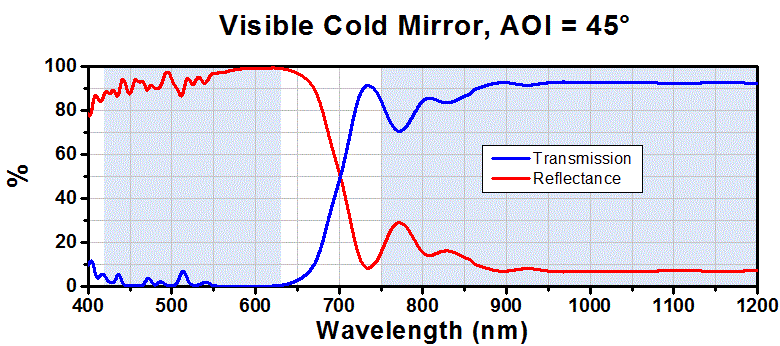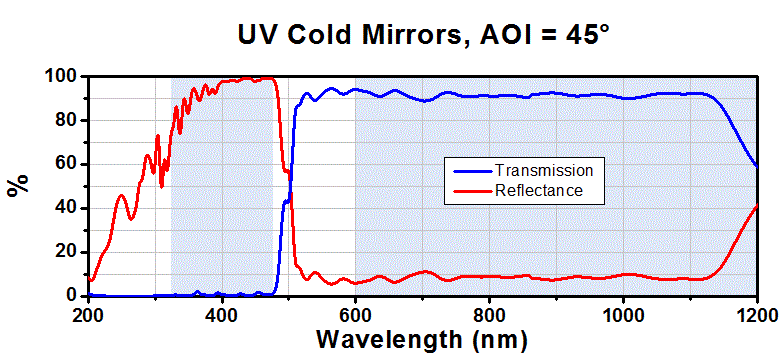To understand how a cold mirror works, it’s helpful to refer to our recent post on hot mirrors, as both are types of heat control coatings.
Cold mirrors function similarly to hot mirrors in that they separate infrared (IR) light from non-IR light. The key difference is that cold mirrors transmit IR wavelengths while reflecting one or more non-IR wavelength bands. For example, as shown in our UV Cold Mirror graph, the coating is designed to reflect over 95% of ultraviolet (UV) light between 350 and 450 nm while transmitting more than 90% of light from 550 to 1200 nm at a 45-degree angle of incidence. This allows the coating to split a beam so that the longer wavelengths (550 to 1200 nm) pass through, while the UV wavelengths (350 to 450 nm) are reflected in a different direction. This capability makes it possible to isolate specific wavelength bands needed for a particular application while filtering out or redirecting unwanted or potentially harmful wavelengths.


A practical application of this type of dichroic filter is in optical fiber systems. Optical fibers can be damaged by exposure to ultraviolet and infrared radiation. By using a cold mirror in combination with a hot mirror, you can isolate the desired visible light from harmful UV and IR bands. This setup allows the visible light to be transmitted through the optical fiber while the UV and IR radiation are reflected away, protecting the fiber and the system from potential damage.
Cold mirrors are commonly used in lighting applications where excess heat is undesirable and IR radiation is not beneficial. In these scenarios, the visible light is reflected toward the intended target while the IR radiation is transmitted away, helping to minimize heat in the application.
